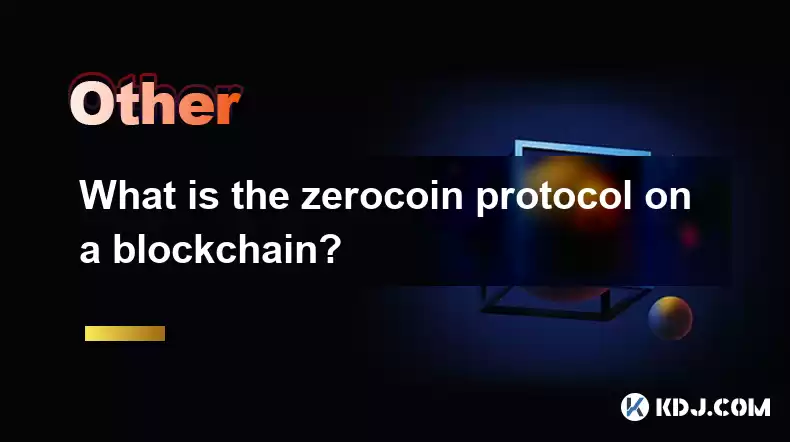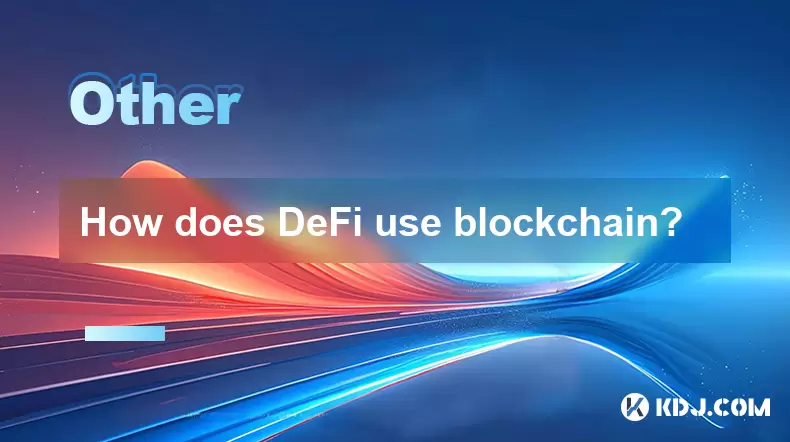-
 Bitcoin
Bitcoin $113700
0.66% -
 Ethereum
Ethereum $3471
-0.04% -
 XRP
XRP $2.885
-0.16% -
 Tether USDt
Tether USDt $1.000
0.05% -
 BNB
BNB $747.8
-0.10% -
 Solana
Solana $161.1
-0.98% -
 USDC
USDC $1.000
0.02% -
 TRON
TRON $0.3255
-0.22% -
 Dogecoin
Dogecoin $0.1980
1.46% -
 Cardano
Cardano $0.7237
2.87% -
 Hyperliquid
Hyperliquid $37.79
0.87% -
 Stellar
Stellar $0.3941
5.48% -
 Sui
Sui $3.422
1.35% -
 Chainlink
Chainlink $16.14
1.97% -
 Bitcoin Cash
Bitcoin Cash $540.7
1.55% -
 Hedera
Hedera $0.2432
4.26% -
 Ethena USDe
Ethena USDe $1.001
0.04% -
 Avalanche
Avalanche $21.31
-0.06% -
 Toncoin
Toncoin $3.624
1.19% -
 Litecoin
Litecoin $109.0
0.76% -
 UNUS SED LEO
UNUS SED LEO $8.967
0.09% -
 Shiba Inu
Shiba Inu $0.00001217
1.84% -
 Polkadot
Polkadot $3.584
1.85% -
 Uniswap
Uniswap $9.123
2.03% -
 Monero
Monero $294.7
0.87% -
 Dai
Dai $0.0000
0.01% -
 Bitget Token
Bitget Token $4.322
0.60% -
 Pepe
Pepe $0.00001048
2.65% -
 Cronos
Cronos $0.1329
2.05% -
 Aave
Aave $257.0
1.88%
What is the zerocoin protocol on a blockchain?
Zerocoin enhances blockchain privacy by using zero-knowledge proofs, making transactions untraceable and improving security, but it faces scalability and adoption challenges.
Apr 12, 2025 at 04:56 pm

The Zerocoin Protocol on a blockchain represents a significant advancement in the realm of digital currencies, particularly in the area of privacy and security. Introduced in 2013 by a group of researchers, including Matthew D. Green, Zerocoin aimed to enhance the privacy of transactions on public blockchains like Bitcoin. Unlike traditional cryptocurrencies where transactions are pseudonymous and can be traced back to their origins with sufficient analysis, Zerocoin introduces a layer of anonymity that makes it nearly impossible to link transactions to specific users.
The Concept Behind Zerocoin
At its core, Zerocoin operates as an extension to existing blockchain systems. It uses a cryptographic technique known as zero-knowledge proofs to allow users to spend their coins without revealing their source. In a traditional blockchain, each coin has a history that can be traced back to its origin. With Zerocoin, a user can convert their traditional coins into Zerocoins, which are then indistinguishable from one another. When spending a Zerocoin, the spender proves that they own a valid Zerocoin without revealing which specific coin they are spending.
How Zerocoin Works
The process of using Zerocoin involves several key steps, each designed to maintain the anonymity of the transaction. Here's a detailed look at how it works:
Minting Zerocoins: To use Zerocoin, a user first converts their regular cryptocurrency into Zerocoins. This is done by sending the cryptocurrency to a special address on the blockchain, where it is destroyed and replaced with a Zerocoin. This process is called minting.
Spending Zerocoins: When a user wants to spend their Zerocoin, they create a transaction that includes a zero-knowledge proof. This proof demonstrates that they have a valid Zerocoin without revealing which one. The transaction is then broadcast to the network, where it is verified and added to the blockchain.
Redeeming Zerocoins: Upon spending a Zerocoin, it is redeemed back into the original cryptocurrency. The recipient of the transaction receives the equivalent value in the traditional cryptocurrency, while the Zerocoin is effectively destroyed.
Benefits of Zerocoin
The implementation of Zerocoin offers several significant benefits to users of blockchain systems:
Enhanced Privacy: The primary advantage of Zerocoin is the enhanced privacy it provides. By breaking the link between the source and destination of funds, it makes it extremely difficult for third parties to track transactions.
Security: Zerocoin leverages advanced cryptographic techniques to ensure the security of transactions. The zero-knowledge proofs used in the protocol are designed to be computationally infeasible to break, ensuring that transactions remain private.
Compatibility: Zerocoin is designed to be an extension to existing blockchain systems, meaning it can be integrated without requiring a complete overhaul of the underlying technology. This makes it a practical solution for enhancing privacy in established cryptocurrencies.
Challenges and Limitations
While Zerocoin offers significant advantages, it also comes with its own set of challenges and limitations:
Scalability: The use of zero-knowledge proofs can be computationally intensive, which can impact the scalability of the blockchain. Transactions that use Zerocoin may take longer to process and require more computational resources.
Adoption: For Zerocoin to be effective, it needs to be widely adopted by users of the blockchain. If only a small percentage of transactions use Zerocoin, it may not provide the level of anonymity that users expect.
Complexity: The cryptographic techniques used in Zerocoin can be complex and may be difficult for the average user to understand. This complexity can be a barrier to adoption and may require additional education and support for users.
Implementation in Cryptocurrencies
Several cryptocurrencies have implemented or considered implementing the Zerocoin protocol. One notable example is Zcash, which uses a related but more advanced protocol called Zerocash. Zcash was designed from the ground up to include privacy features, using zero-knowledge proofs to ensure that transactions remain confidential.
In the case of Bitcoin, there have been proposals to integrate Zerocoin as a sidechain or as an optional feature. However, these proposals have faced challenges due to the complexity of integrating such a system into an established blockchain.
Technical Details of Zerocoin
Understanding the technical details of Zerocoin can provide deeper insight into how it achieves its privacy goals. The protocol uses a commitment scheme and zero-knowledge proofs to ensure the anonymity of transactions:
Commitment Scheme: When minting a Zerocoin, the user commits to a value without revealing it. This commitment is stored on the blockchain and can later be used to prove ownership of a Zerocoin without revealing the specific coin.
Zero-Knowledge Proofs: These proofs allow a user to prove that they have a valid Zerocoin without revealing any information about the coin itself. The proof is verified by the network, ensuring that the transaction is valid without compromising the user's privacy.
Practical Use Cases
Zerocoin has several practical use cases that can benefit users of blockchain systems:
Financial Privacy: Individuals who value their financial privacy can use Zerocoin to conduct transactions without fear of being tracked. This can be particularly important for those living in regions with oppressive financial surveillance.
Business Transactions: Businesses that handle sensitive financial information can use Zerocoin to protect their transactions from competitors or malicious actors.
Whistleblower Protection: Whistleblowers can use Zerocoin to receive funds anonymously, protecting their identity and ensuring their safety.
Frequently Asked Questions
Q: Can Zerocoin be used with any blockchain?
A: Zerocoin is designed to be compatible with existing blockchain systems, but its implementation can vary. Some blockchains, like Zcash, have integrated similar privacy protocols from the ground up, while others may require additional development to support Zerocoin.
Q: How does Zerocoin affect the transaction speed on a blockchain?
A: The use of zero-knowledge proofs in Zerocoin transactions can increase the computational load on the network, potentially slowing down transaction processing times. However, this impact can be mitigated with advancements in technology and optimization of the protocol.
Q: Is Zerocoin legal to use?
A: The legality of using Zerocoin depends on the jurisdiction and the specific use case. In general, using privacy-enhancing technologies like Zerocoin is legal, but it may be subject to certain regulations or restrictions in some countries.
Q: Can Zerocoin be used for illegal activities?
A: While Zerocoin can enhance privacy, it is not designed to facilitate illegal activities. Like any technology, it can be misused, but its primary purpose is to provide legitimate privacy for users of blockchain systems.
Disclaimer:info@kdj.com
The information provided is not trading advice. kdj.com does not assume any responsibility for any investments made based on the information provided in this article. Cryptocurrencies are highly volatile and it is highly recommended that you invest with caution after thorough research!
If you believe that the content used on this website infringes your copyright, please contact us immediately (info@kdj.com) and we will delete it promptly.
- Navigating the Meme Coin Mania: Cold Wallets, SHIB, and DOGE in 2025
- 2025-08-03 22:30:16
- Bitcoin's Price Fall and Scrutiny: What's a New Yorker to Think?
- 2025-08-03 22:30:16
- Shiba Inu's Resistance and Recovery Push: What's Next for SHIB?
- 2025-08-03 22:50:16
- Bitcoin, Hashcash, and Crypto Innovation: A Look at the Foundation and Future
- 2025-08-03 23:12:53
- Meme Coin Mania: Bonk, Pudgy Penguins, and the Quest for the Next Crypto Sensation
- 2025-08-03 22:50:16
- Binance Coin's Bull Run: Chain Upgrades, Token Burns, and the Road to $1000
- 2025-08-03 23:15:31
Related knowledge

What is the difference between on-chain and off-chain transactions?
Aug 02,2025 at 04:22pm
Understanding On-Chain TransactionsOn-chain transactions refer to digital asset transfers that are recorded directly on a blockchain ledger. These tra...

What is a node's role in a blockchain network?
Aug 03,2025 at 03:16pm
Understanding the Function of a Node in a Blockchain NetworkA node is a fundamental component of any blockchain network, acting as a participant that ...

What is the double-spending problem and how does blockchain prevent it?
Aug 02,2025 at 01:07pm
Understanding the Double-Spending ProblemThe double-spending problem is a fundamental challenge in digital currency systems where the same digital tok...

What is the difference between a blockchain and a database?
Aug 01,2025 at 09:36pm
Understanding the Core Structure of a BlockchainA blockchain is a decentralized digital ledger that records data in a series of immutable blocks linke...

How does DeFi use blockchain?
Aug 03,2025 at 11:15pm
Understanding the Role of Blockchain in DeFiDecentralized Finance (DeFi) relies fundamentally on blockchain technology to operate without intermediari...

How does blockchain handle scalability?
Aug 02,2025 at 02:58pm
Understanding Blockchain Scalability ChallengesBlockchain scalability refers to a network's ability to handle an increasing volume of transactions wit...

What is the difference between on-chain and off-chain transactions?
Aug 02,2025 at 04:22pm
Understanding On-Chain TransactionsOn-chain transactions refer to digital asset transfers that are recorded directly on a blockchain ledger. These tra...

What is a node's role in a blockchain network?
Aug 03,2025 at 03:16pm
Understanding the Function of a Node in a Blockchain NetworkA node is a fundamental component of any blockchain network, acting as a participant that ...

What is the double-spending problem and how does blockchain prevent it?
Aug 02,2025 at 01:07pm
Understanding the Double-Spending ProblemThe double-spending problem is a fundamental challenge in digital currency systems where the same digital tok...

What is the difference between a blockchain and a database?
Aug 01,2025 at 09:36pm
Understanding the Core Structure of a BlockchainA blockchain is a decentralized digital ledger that records data in a series of immutable blocks linke...

How does DeFi use blockchain?
Aug 03,2025 at 11:15pm
Understanding the Role of Blockchain in DeFiDecentralized Finance (DeFi) relies fundamentally on blockchain technology to operate without intermediari...

How does blockchain handle scalability?
Aug 02,2025 at 02:58pm
Understanding Blockchain Scalability ChallengesBlockchain scalability refers to a network's ability to handle an increasing volume of transactions wit...
See all articles

























































































